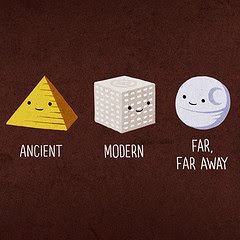I am far from sure that the semantics of opposites are a universal conception, ubiquitous across most languages—maybe big and little or long and short are passable everywhere but dog and cat or cat and mouse or even good and evil are not acceptable answers elsewhere. Maybe there is not always a real and handy word to express the idea of an opposite, though the concept is understood.
 Doubleplusungood, or Penelope weaving and unweaving as she waits for Odysseus to return. There are too very fancy kinds of operative opposites, like hyperbole and its countermand litotes, exaggeration and understatement—though the same terms are not employed in the study of conics. Recently, I came across another pairing that I liked, although I am not sure quite satisfies the definition: phobia and soteria (φοβός και σωτηρία, the root of salvation). This is taken not only in the sense of the duality between fear and calm, but rather with the difference between almost clinical morbidity and paralysis and relief and the saving-grace called deliverance, being not afraid in proportion with the disproportionate aversion that the phobia represents. Not everyone has an unsalvageable disliking of specifically spiders and snakes nor generally of crowds or the great outdoors, but I think there would be in a clinical definition, should psychology care for what’s right and not just what’s wrong, of soteria complementary gradations of relief and unfear.
Doubleplusungood, or Penelope weaving and unweaving as she waits for Odysseus to return. There are too very fancy kinds of operative opposites, like hyperbole and its countermand litotes, exaggeration and understatement—though the same terms are not employed in the study of conics. Recently, I came across another pairing that I liked, although I am not sure quite satisfies the definition: phobia and soteria (φοβός και σωτηρία, the root of salvation). This is taken not only in the sense of the duality between fear and calm, but rather with the difference between almost clinical morbidity and paralysis and relief and the saving-grace called deliverance, being not afraid in proportion with the disproportionate aversion that the phobia represents. Not everyone has an unsalvageable disliking of specifically spiders and snakes nor generally of crowds or the great outdoors, but I think there would be in a clinical definition, should psychology care for what’s right and not just what’s wrong, of soteria complementary gradations of relief and unfear.
Saturday 29 September 2012
word-association or antonymy
catagories: 🇬🇷, 🧠, language, philosophy, Star Wars
encounter at farpoint
buddhist “iron man” found by nazis is from outer space
In the 1938, an archaeological expedition was sent from Nazi Germany to Tibet as part of Heinrich Himmler’s Ahnenerbe programme, a project that sought to validate Germany’s hegemony through cultural and historic research of what was considered Aryan and some very creative and convenient revisions.
Friday 28 September 2012
post-meridian or l’isola del tesoro
Thursday 27 September 2012
discontiguous
A few weeks ago, during the run up to municipal elections, I noticed this billboard—for what turned out to be a study proposing that Bavaria could manage for itself independent of the rest of Germany, posted on a concrete column at the intersection that tends to host political posters, though not exclusively.
catagories: 🇩🇪, 🇪🇺, 🇬🇧, economic policy, revolution
Wednesday 26 September 2012
tithe
Usually I am an unabashed apologist for the Catholic Church, ready to make excuses for a very human institution—although some conduct by some members is inexcusable and past conduct certainly deserves reproach—however I am very saddened and disheartened to hear the outcome of their latest stance and statute, licensed by a court of law, which essentially ruled that members of the Church that choose not to pay the eight percent customary tax to support the Church cannot remain in good standing.
conching
I imagine that precision clockworks will be next. Of course, with imported food, consumers need to know what they’re eating is safe, but it is American agribusiness and appetites that’s escalating many of the problems with food supply and actual food security, and submitting to indignities that defy common-sense is not much of an alternative to being blocked, cut-out or compromised. Chocolate-makers would face pyrrhic victory is they were allowed to stay in the export business, providing they toss aside traditional manufacturing methods or possibly feed their milk cows a recombineered diet.
catagories: 🇨🇭, 🇺🇸, 🌍, environment, food and drink, Wikipedia











